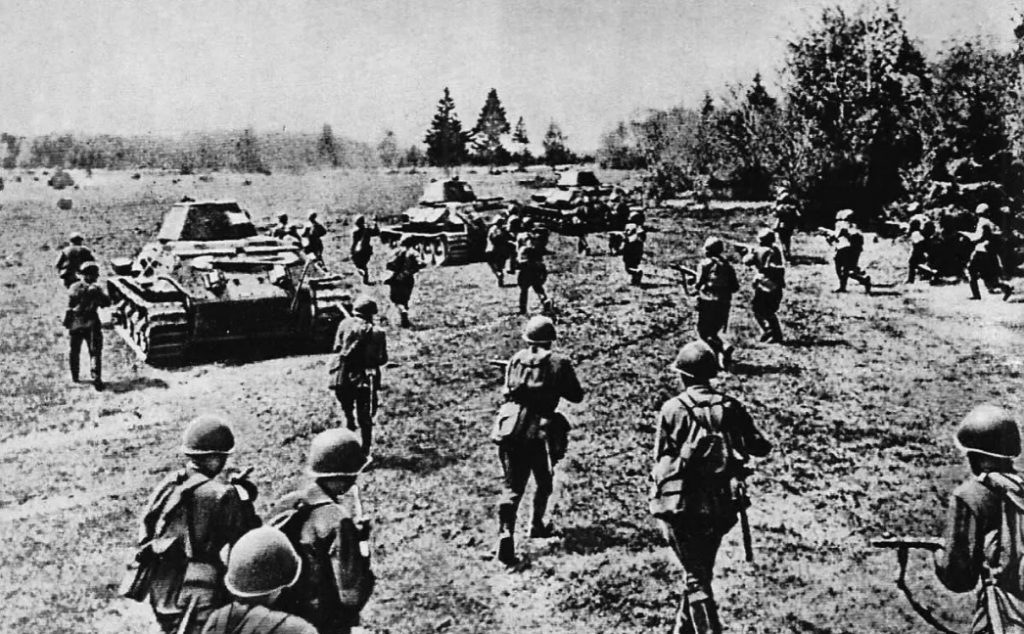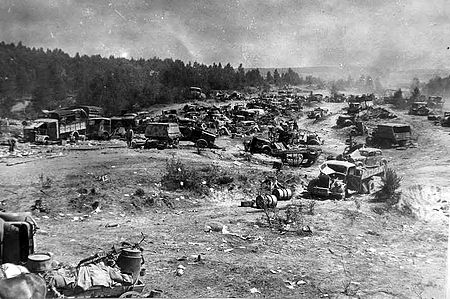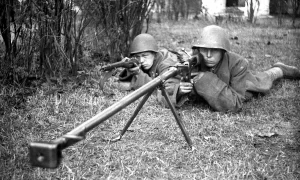The Belarusian offensive operation “Bagration” was a large-scale offensive operation of the Great Patriotic War, conducted June 23 – August 29, 1944. It was named so in honor of the commander, who gained fame during the Patriotic War of 1812, P.I.Bagration. During the operation, the Soviet army inflicted the largest defeat of the German army in the entire military history of Germany.


By June 1944, the front line in the east approached the Vitebsk – Orsha – Mogilev – Zhlobin line, forming a huge ledge – a wedge facing into the depths of the USSR, the so-called “Belarusian balcony”. If in Ukraine the Red Army managed to achieve a series of impressive successes (almost the entire territory of the republic was liberated, the Wehrmacht suffered heavy losses in the chain of “boilers”), then when trying to break through in the direction of Minsk in the winter of 1943-1944, the successes, on the contrary, were rather modest. From October 1943 to April 1, 1944, 11 operations were carried out to break through to Minsk and Orsha.
At the same time, by the end of the spring of 1944, the offensive in the south slowed down, and the Headquarters of the Supreme High Command decided to change the direction of efforts. As noted by K. K. Rokossovsky,
“By the spring of 1944, our troops in Ukraine had advanced far ahead. But then the enemy transferred fresh forces from the west and stopped the advance of the 1st Ukrainian Front. The fighting took on a protracted nature, and this forced the General Staff and Headquarters to shift their main efforts to a new direction. ”
The strengths of the parties differ from source to source. According to the publication “Operations of the Soviet Armed Forces in the Second World War,” from the Soviet side, 1 million 200 thousand people participated in the operation (excluding the rear units). On the German side – in the army group “Center” – there were 486,000 troops (a total of 849,000 people, including support personnel and rear units). In addition, in the second stage, the right wing of Army Group North and the left wing of Army Group Northern Ukraine took part in the battle.
Four fronts of the Red Army were opposed by four armies of the Wehrmacht:
- 2nd Army of Army Group Center, which held the area of Pinsk and Pripyat, marching 300 km east of the front line;
- The 9th Army of Army Group Center, which defended the area on both sides of the Berezina southeast of Bobruisk ;
- 4th Army and 3rd Panzer Army of Army Group Center, which occupied the interfluve of the Berezina and Dnieper rivers, as well as the bridgehead from Bykhov to the area northeast of Orsha. In addition, units of the 3rd Panzer Army occupied the Vitebsk region.
A thorough reconnaissance of the enemy’s forces and positions was organized. The extraction of information was carried out in many directions. In particular, the reconnaissance teams of the 1st Belorussian Front captured about 80 ” languages “. Aerial reconnaissance of the 1st Baltic Front spotted 1,100 different firing points, 300 artillery batteries, 6,000 dugouts, etc. Active acoustic reconnaissance, undercover reconnaissance, study of enemy positions by artillery observers, etc. was also carried out. reconnaissance and its intensity, the enemy grouping was revealed quite fully.

The headquarters tried to achieve maximum surprise. All orders to the unit commanders were given personally by the army commanders; telephone conversations concerning preparation for the offensive, even in coded form, were prohibited. The fronts preparing for the operation went into radio silence. At the forefront, active earthworks were carried out to simulate defense preparations. The minefields were not removed completely, so as not to alarm the enemy, the sappers were limited to screwing fuses off the mines. Concentration of troops and regrouping were carried out mainly at night. Dedicated officers of the General Staff patrolled the area on airplanes to monitor compliance with camouflage measures.
The troops underwent intensive training in the interaction of infantry with artillery and tanks, assault actions, forcing water obstacles, etc. Subunits were alternately withdrawn from the front line to the rear for these exercises. Practicing tactical techniques was carried out as close as possible to combat conditions and with live fire.
Before the operation, commanders of all levels, down to the companies, conducted reconnaissance, assigning tasks to subordinates on the spot. The tank units were assigned artillery spotters and air force officers for better interaction.
Thus, the preparation of Operation Bagration was carried out extremely carefully, while the enemy was left in the dark about the upcoming offensive.
Military Results



In the course of this extensive offensive, the territory of Belarus, eastern Poland, part of the Baltic was liberated and the German Army Group Center was almost completely defeated. The Wehrmacht suffered heavy losses, partly due to the fact that A. Hitler forbade any retreat. Subsequently, Germany was no longer able to make up for these losses.
The success of Operation Bagration significantly exceeded the expectations of the Soviet command. As a result of a two-month offensive, Belarus and part of the Baltic States were completely cleared, the eastern regions of Poland were occupied. In general, an advance to a depth of 600 km was achieved at a front of 1,100 km. In addition, the operation endangered Army Group North in the Baltics; the carefully constructed line, the Panther line, was bypassed. Subsequently, this fact greatly facilitated the Baltic operation. Also, as a result of the capture of two large bridgeheads beyond the Vistula south of Warsaw – Magnushevsky and Pulawsky (as well as the bridgehead at Sandomierz captured by the 1st Ukrainian Front during the Lvov-Sandomierz operation ), a reserve was created for the future Vistula-Oder operation. In January 1945, the offensive of the 1st Belorussian Front began from the Magnushevsky and Pulawsky bridgeheads, stopping only on the Oder.


From a military point of view, the battle in Belarus led to a massive defeat for the German armed forces. In the official German military history of the Second World War, Operation Bagration is regarded as the greatest defeat in all of German history (even in the Verdun meat grinder, the first world German army suffered fewer losses). There is a widespread point of view according to which the battle in Belarus is the largest defeat of the German armed forces in World War II. Operation Bagration is a triumph of the Soviet theory of military art thanks to a well-coordinated offensive movement of all fronts and an operation to misinform the enemy about the location of the general offensive that began in the summer of 1944. On the scale of the Soviet-German front, Operation Bagration was the largest in a long series of offensives. It swallowed up German reserves, seriously limiting the enemy’s ability to fend off both other offensives on the Eastern Front and the advance of the Allies in Western Europe. So, for example, the division “Great Germany” was transferred from the Dniester to Siauliai and, thus, was deprived of the opportunity to participate in repelling the Yasso-Kishinev operation. The Hermann Goering division was forced to abandon its positions near Florence in Italy in mid-July, and was thrown into battles on the Vistula. Florence was liberated in mid-August, when Goering’s units unsuccessfully stormed the Magnushevsky bridgehead.












